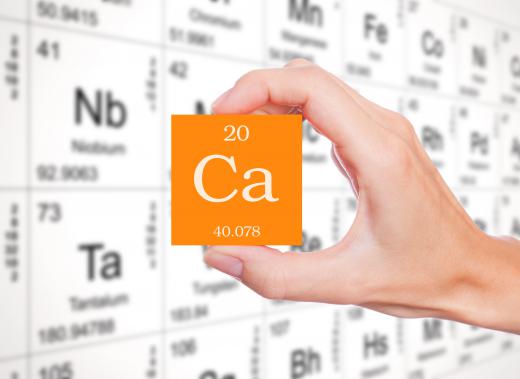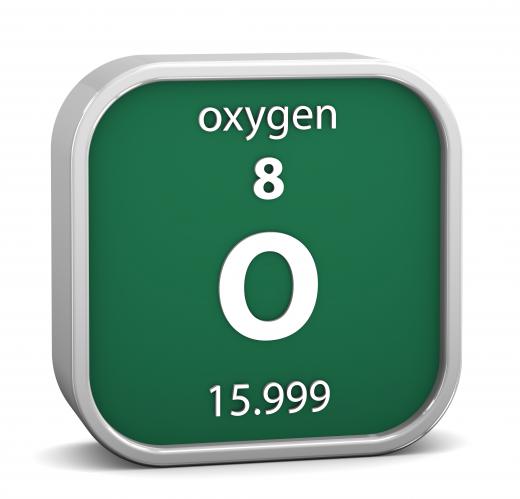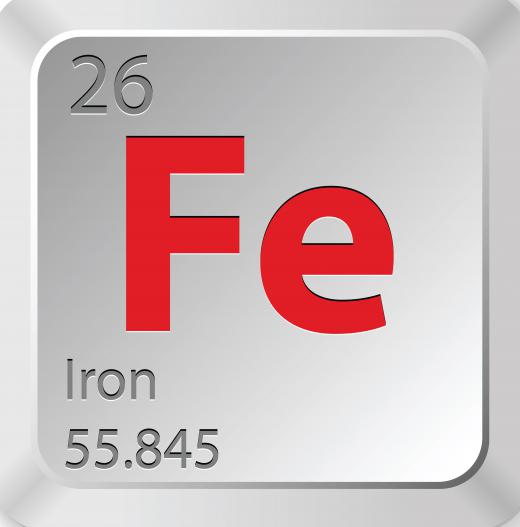How Many Elements on the Periodic Table of the Elements Occur Naturally?
 Mary McMahon
Mary McMahon
The answer to the question of how many objects on the periodic table of the elements are naturally occurring is actually a bit complicated. Conventional wisdom says that the first 92 elements, from element 1, hydrogen, to element 92, uranium, are all naturally occurring, but in fact, some of these elements are highly unstable, and have only been observed when they have been created artificially. Some people believe that elements 93 (neptunium) and 94 (plutonium) should also be included on a list of naturally occurring elements. As a result, anywhere between 94 and 88 elements are “naturally occurring,” depending on the definition one is using.
Elements are considered to be “naturally occurring” when they can be found in nature, rather than needing to be created in a laboratory, and many representations of the periodic table of the elements include a dividing line between natural and artificially produced elements. Some naturally occurring elements have very unstable isotopes or short half-lives, so they exist only intermittently and in very small quantities on Earth. Some people believe that when thinking about the periodic table, elements such as these should not really be considered “naturally occurring,” especially since they are only observed as a direct result of human activity. Others argue that, while only small amounts are observable at any given time, they are “natural” because they can occur spontaneously.

The questionable elements are element 43, technetium; element 61, promethium; element 85, astatine; and element 87, francium. Elements 43 and 61 are somewhat unusual, as they are surrounded by stable elements, but they have only been observed in controlled laboratory conditions. Elements 85 and 87 do appear in nature, but only briefly and very rarely, making it tough to pin down an actual natural appearance for these shy elements.

If all four questionable elements are struck from the list of “naturally occurring” elements, there are either 90 or 88 naturally occurring elements, depending on whether or not neptunium and plutonium are included on the list. Some people include astatine and francium as well, raising the total to 92 or 90. The most-commonly cited number is “92,” which could be viewed as the first 92 entries on the periodic table, or the first 94 minus elements 43 and 61, depending on how complicated people feel like being.

It is important for people to remember that, when looking at the periodic table of the elements, “naturally occurring” does not necessarily mean “abundant.” Many naturally occurring elements are in fact quite rare, although some were once more abundant. Levels of elements also change depending on where a person is; helium, for example, is rare on Earth, but abundant around the Sun.
AS FEATURED ON:
AS FEATURED ON:














Discussion Comments
Ugh. So I remember in my day there were maybe 108 elements naturally occurring, and today 118 or so. Those added are a tuft as when given pressure with another element they combust/react, etc. What?
My 7 year old asked how many elements are naturally occurring? In this day and age I can't give an answer, as science has changed and they have now included non natural occurring elements!
Naturally occurring elements on earth, and then those in the universe. Hmmm. Thus, perhaps more to be discovered to give us an even 100. I wonder then too how many more elements to be "man-made"? The periodic table, I suppose, will continue to expand, even if for those very short-lived and unstable elements.
This still doesn't tell me why elements 43 and 61 aren't natural and don't follow the rule that states elements past 95 are synthetic?
@aaaCookie - I was thinking the same thing! We did not even touch on it when studying periodic table history, which is probably where the issue would have popped up. I am sure it is discussed at length in college, but it really seems kind of important to the subject even on a basic level.
When we studied the periodic table in high school science, the question of natural versus unnatural elements was hardly touched on, though I imagine had I taken high level chemistry it would have been. while I can now at least read the modern periodic table, I had no idea the questions of natural and unnatural, abundant and rare, were so complicated. Considering the importance this holds in modern environmental science, it seems this is something even the average person ought to know far more about.
Post your comments